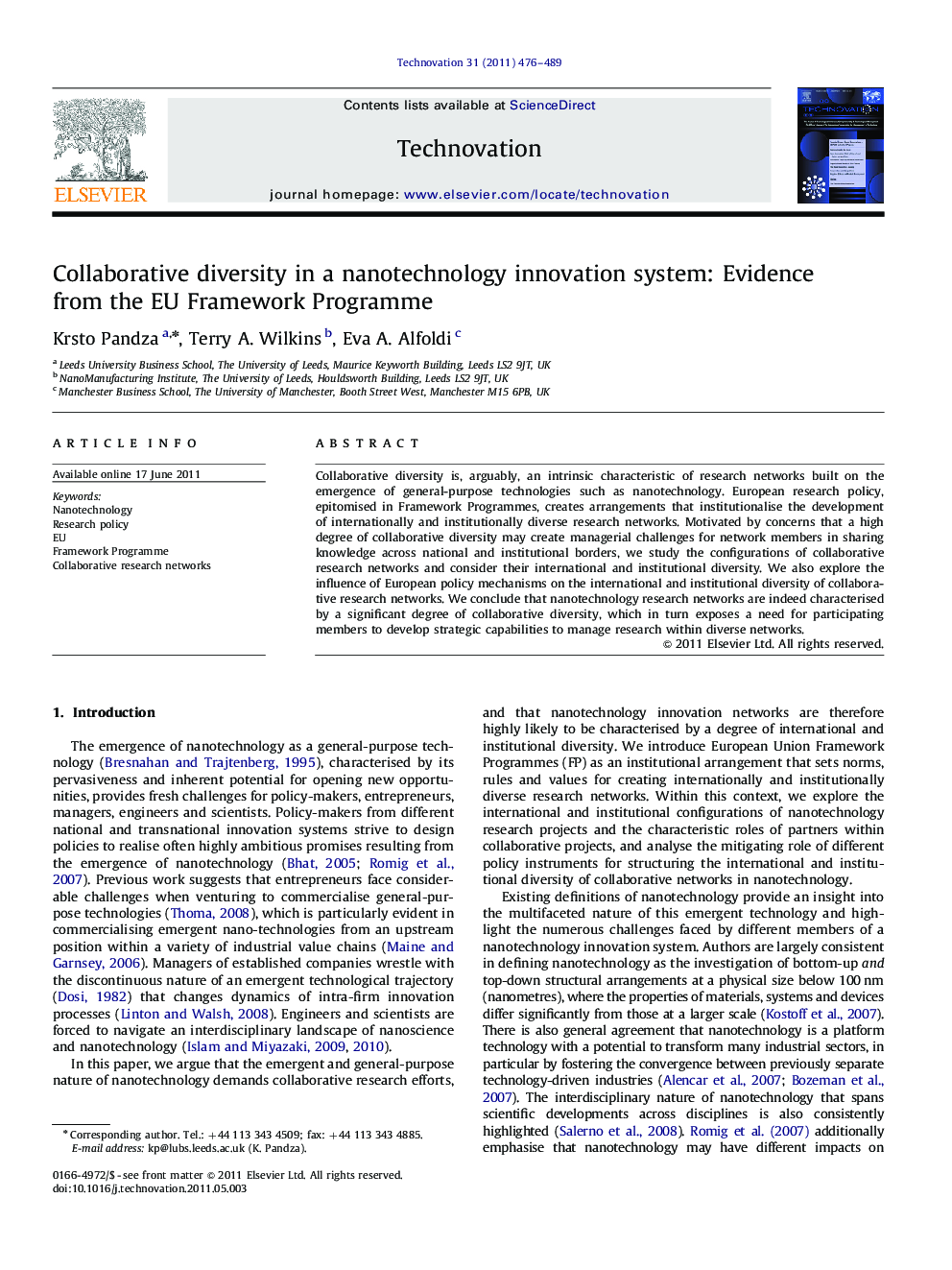| Article ID | Journal | Published Year | Pages | File Type |
|---|---|---|---|---|
| 1022201 | Technovation | 2011 | 14 Pages |
Collaborative diversity is, arguably, an intrinsic characteristic of research networks built on the emergence of general-purpose technologies such as nanotechnology. European research policy, epitomised in Framework Programmes, creates arrangements that institutionalise the development of internationally and institutionally diverse research networks. Motivated by concerns that a high degree of collaborative diversity may create managerial challenges for network members in sharing knowledge across national and institutional borders, we study the configurations of collaborative research networks and consider their international and institutional diversity. We also explore the influence of European policy mechanisms on the international and institutional diversity of collaborative research networks. We conclude that nanotechnology research networks are indeed characterised by a significant degree of collaborative diversity, which in turn exposes a need for participating members to develop strategic capabilities to manage research within diverse networks.
► European research networks are characterised with international and institutional diversity. ► The configuration of research networks in nanotechnology reflects EU policy goals. ► New member states rarely act as project coordinators and this influences knowledge distribution. ► Industrial partners often participate in small numbers within the project. ► Large companies focus on projects with a more strongly applied orientation.
